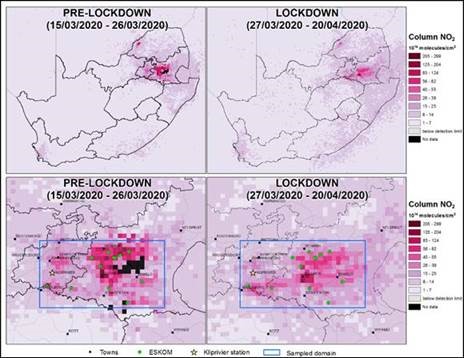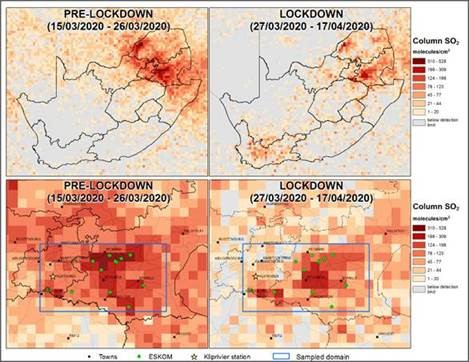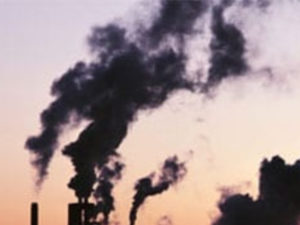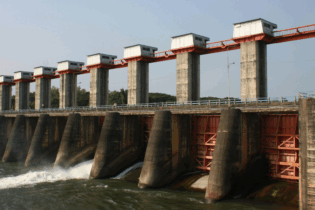A preliminary analysis of satellite data on air pollution shows a decrease in the concentrations of pollutants over South Africa during the national lockdown caused by the outbreak of the Coronavirus in the country.
This is according to a team of researchers at the Council for Scientific and Industrial Research (CSIR) who are working in collaboration with Dr Eloise Marais from the University of Leicester, in the United Kingdom, to understand the impact of the lockdown on air quality in South Africa. These air quality experts say some parts of the country have been showing a decrease in the concentration of pollutants during this period. Using satellites data, the team can explore the impacts of the lockdown on the concentrations of the pollutants in the atmosphere. Using ground-based measurement data, the team can explore the impacts of the lockdown on ground-level concentrations that have a direct impact on health, as they are measured at the level at which people breathe. The preliminary analysis of the satellite data shows that there has been a decrease in the column of tropospheric nitrogen dioxide (NO2) and sulfur dioxide (SO2). This data was obtained from the Earth Observing TROPOMI instrument on the Sentinel-5P satellite (see attached Figure 1). Over the Highveld, NO2 concentrations decreased by 23% after the lockdown (27 March to 20 April 2020) compared to before (10-26 March 2020), and SO2 concentrations are 47% lower. The SO2 data only extends to 17 April 2020.

There are also natural sources from lightning, bacteria in soils, as well as semi-natural sources, like biomass burning. These natural sources tend to be seasonal with the burning season in South Africa occurring in late winter through spring.
The largest sources of sulfur emissions in South Africa are coal-fired power plants and industrial activity that uses or processes materials containing sulfur, such as coal. Prof. Garland adds that there are numerous aspects that could affect the pollutant concentrations. “It would be premature to attribute this change solely to the decreases in emissions from the lockdown. Confirmation with additional surface observations and a model are required. This work is on-going.” Quantifying the change in air quality is not trivial, as it will vary in space and time, and will be affected by the fact that we would normally expect pollution levels to be increasing slowly towards colder months. “Attributing changes in air pollution to specific actions is not simple, as it can be influenced by many factors, including a change in temperature, rainfall, wind speed and direction, as well as changes in close and distant emission sources,” says Garland. Dr Marais, Associate Professor in Earth Observations at the University of Leicester, says the decreases in emissions of pollutants from lockdowns and travel restrictions leading to changes in air quality were documented extensively in countries like China, Italy, India, Spain and the UK, which have been in lockdown mode longer than South Africa. Many of these reports used data from the space-based TROPOMI instrument. It is not surprising then that South Africa is starting to see the same effect of the lockdown on air quality. “This change will likely be temporary, as many of the emissions reductions due to the lockdown will reverse when we go back to our normal day-to-day activities that make large contributions to air pollution. This period does provide us with a unique opportunity to learn about the influence of different sources on air quality, whether natural or anthropogenic. This information is crucial for developing effective air quality policies,” Says Marais. Other team members are CSIR air quality experts, Ms Seneca Naidoo, Mr Mogesh Naidoo and Mrs Juanette John.







